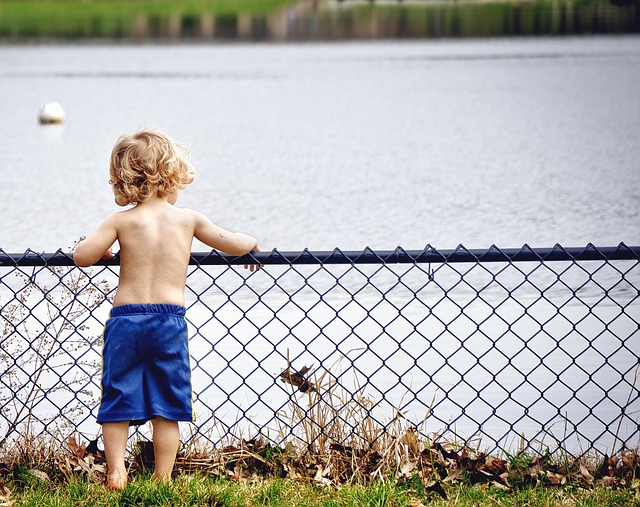In New Bedford, MA, the pursuit of sustainable living extends beyond traditional eco-initiatives. One notable area of focus is fencing—a structural element that can significantly impact a property’s environmental footprint. This article explores eco-friendly fencing materials and their benefits for New Bedford residents. We delve into various green options, highlight their advantages, guide readers through selection and installation, and provide local resources to facilitate the transition to more sustainable landscaping practices.
- Eco-Friendly Fencing Options in New Bedford
- Benefits of Sustainable Fence Materials
- How to Choose the Greenest Fencing for Your Yard
- Installation and Maintenance Tips for Eco-Fences
- Local Resources for Eco-Conscious Landscaping
Eco-Friendly Fencing Options in New Bedford
New Bedford, MA, residents now have a growing array of eco-friendly fencing options to choose from. Traditional materials like wood and vinyl have long been the go-to choices, but an increasing demand for sustainability has sparked innovation in the industry. Today, you can find various alternatives made from recycled plastics, bamboo, and even organic composites.
These new materials offer not just environmental benefits but also aesthetic advantages. They come in diverse styles, colors, and textures, allowing homeowners to enhance their outdoor spaces while reducing their carbon footprint. Furthermore, many eco-friendly fencing options are designed to be durable, low-maintenance, and long-lasting, ensuring that New Bedford’s green spaces remain vibrant and well-protected for years to come.
Benefits of Sustainable Fence Materials
In the pursuit of a greener New Bedford, the choice of fencing materials plays a significant role in our environmental impact. Eco-friendly fence options offer numerous benefits that go beyond aesthetics. Firstly, they are crafted from sustainable resources, reducing pressure on finite forests and promoting responsible land management. These materials often incorporate recycled content, closing the loop on waste and conserving natural resources.
Moreover, sustainable fencing solutions provide long-term durability, decreasing the need for frequent replacements. They are designed to resist rot, pests, and extreme weather conditions, ensuring a robust and low-maintenance barrier that can stand the test of time. This longevity translates to cost savings for homeowners and reduced environmental footprint from manufacturing and disposal.
How to Choose the Greenest Fencing for Your Yard
When selecting eco-friendly fencing materials, consider the options that not only minimize environmental impact but also align with your region’s climate and local wildlife. Start by evaluating the purpose of your fence; is it for privacy, security, or aesthetic appeal? Different materials offer varying levels of durability, maintenance requirements, and visual aesthetics.
Research locally sourced, sustainable options such as recycled plastic, bamboo, or treated wood certified by responsible management programs. Check the product’s lifecycle analysis to understand its environmental benefits throughout its existence. Also, consider the fence’s compatibility with local wildlife; for instance, avoid materials that may harm birds or small animals. Finally, choose a fencing solution that promotes biodiversity by providing habitats or food sources for beneficial insects and birds.
Installation and Maintenance Tips for Eco-Fences
When installing an eco-friendly fence, it’s crucial to follow best practices to ensure its longevity and maximize its environmental benefits. Start by preparing the site properly, clearing any debris or plants that could interfere with the fence’s placement. Ensure the ground is level and compacted to provide a solid foundation for the posts, which should be sunk deep enough to withstand wind and weather conditions. Use natural, locally sourced materials whenever possible to minimize transportation emissions.
Maintenance of these fences involves regular cleaning to remove dirt and debris, as well as periodic checks for loose connections or damaged sections. Repair any issues promptly with eco-friendly replacement parts. The use of organic, non-toxic cleaners and sealants will help preserve the fence while keeping harmful chemicals out of the local ecosystem. Staying on top of maintenance ensures your eco-fence remains effective in reducing carbon footprints and promoting biodiversity for years to come.
Local Resources for Eco-Conscious Landscaping
New Bedford, MA, is home to a growing movement towards eco-conscious landscaping, and one significant aspect of this shift is the use of sustainable fencing materials. Fortunately, local resources are readily available to support homeowners and businesses in their quest for environmentally friendly options. Local nurseries and garden centers stock a variety of native plants, trees, and shrubs that not only enhance the aesthetics of outdoor spaces but also provide habitats for local wildlife.
Additionally, recycling centers and waste management facilities offer opportunities to repurpose materials into fencing. From recycled plastic and wood composites to reclaimed wood, these options reduce waste and provide durable, low-maintenance barriers. Local initiatives and community gardens also promote the exchange of plant material and knowledge among residents, fostering a cooperative approach to sustainable landscaping practices.
